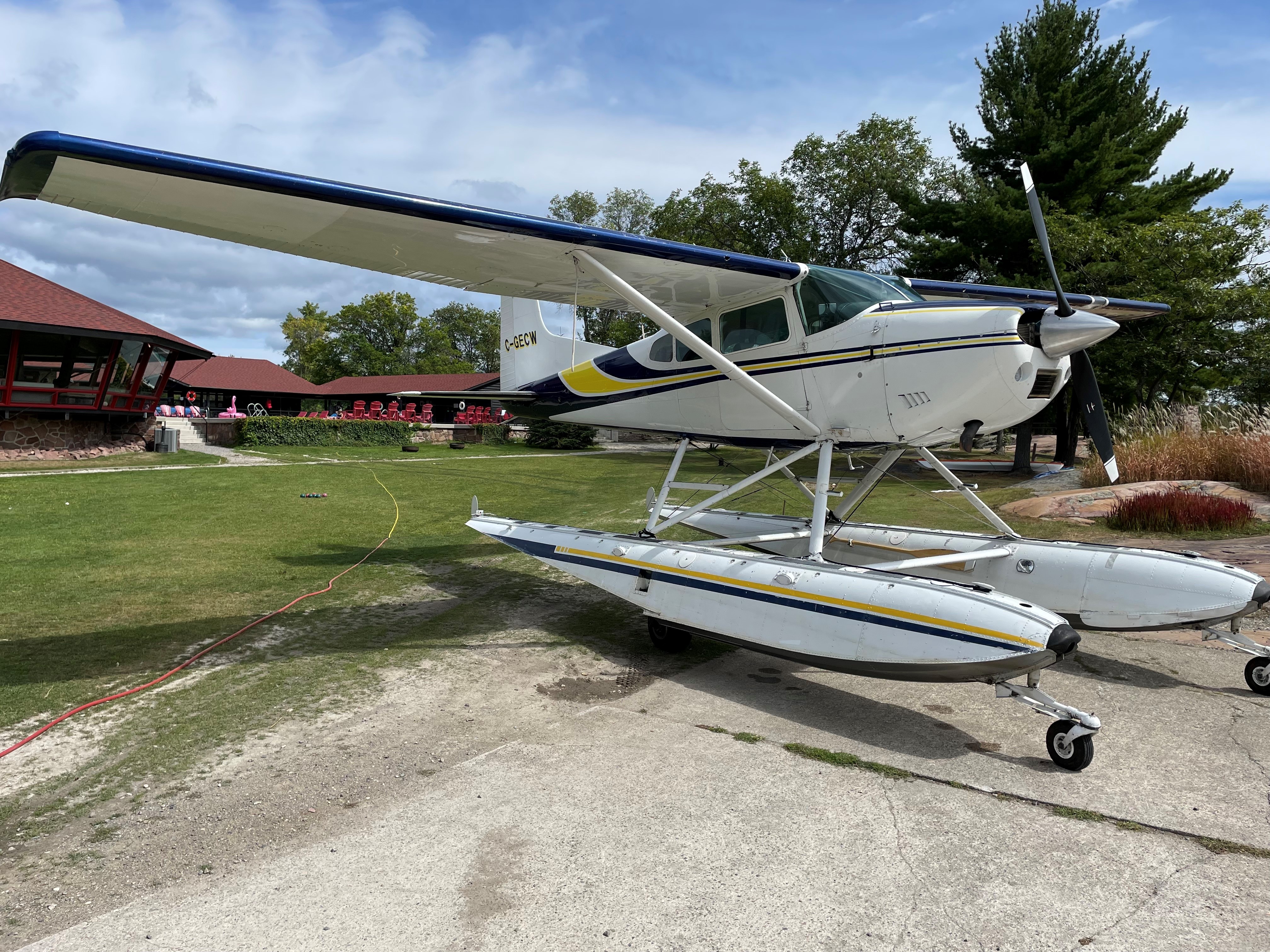How To Sell Without a Broker

By Phil Lightstone
With aircraft resale prices at an all-time high, some aircraft owners may consider selling their aircraft without the help of a professional sales agent, like an aviation broker or dealer. Some aircraft dealers, when selling new aircraft, will take the buyer’s older aircraft in as trade. In this case, the buyer of the brand-new aircraft will save the GST/HST based upon the value of the traded aircraft, essentially offsetting the cost of broker fees.
Typical brokerage fees in the used aircraft marketplace range from four to six percent. Based upon selling a Cessna 172 in today’s hotter marketplace (the marketplace is seeing a slight cooling down), an owner could save $6,000 to $7,000 USD. Not to diminish the added value (effort and customer network) that a broker contributes to the sale of an aircraft, but depending upon the financial constraints of the aircraft owner, the owner may be willing to contribute some time (sweat equity) to the process.
The Canadian aircraft marketplace is relatively small. Transport Canada reports that as of the end of December 2023, there were total of 29,663 privately registered aircraft in Canada. At the time of writing this article, Canadian Plane Trade (www.canadianplanetrade.ca) had 21 aircraft for sale, while Trade-A-Plane had 153 Canadian aircraft for sale on their website, priced from a low of $5,500 to a high of $15.5 Million USD. When selling your aircraft, consider that you will be competing against other used aircraft for sale in Canada and the US both in price, time, and upgrades. Having a great looking advertisement will be critical to prospective buyers calling you first. You need to decide about price and your willingness to negotiate with a buyer. But that negotiation should take place after the pre purchase inspection (the buyer has skin in the game). Depending upon the type of your aircraft, you may be deluged with calls (Cessna 172’s are currently a hot commodity). Your biggest challenge will be qualifying motivated buyers from the proverbial tire kickers. You might consider creating a list of qualifying questions to help.
The process to sell an aircraft has the many steps: education; documentation; photography; valuation; marketing; terms of sale; pre-purchase inspection; and closing. Step zero, download COPA’s Guides to Buying and Selling Aircraft.
Gather and Present Your Aircraft’s History
Step one is documentation: scan the journey log; scan the technical logs; record the hours (total time on airframe; time on engine; time on propeller) and the relevant dates (of engine and propeller overhauls). Document the major upgrade history (e.g. avionics, battery, airframe, paint, interior, tires, etc.) and other relevant dates and times: hours left on magnetos; next inspection and hydrostatic date of the fire extinguisher; date of the next ELT battery replacement; Airworthiness Directive dates and times remaining; date of the next propeller overhaul/inspection; IFR certification date; to name a few. Be prepared with a list of the ongoing maintenance conducted during your ownership. The goal is to paint a picture to a prospective buyer about the history and value of the aircraft.
Snap to Sell! Mastering Aircraft Photography
The next step is to take many flattering photographs of both the interior and exterior of the aircraft. Ideally images on the ramp on a bright sunny day. You might consider positioning the aircraft so that the sun is to your back. Timing of when you take the photos is important to reduce shadows. When photographing the panel, turn the master and avionics master on.
Valuation Vibes: Assessing Your Aircraft’s Worth
Step three is to determine the value of the aircraft. Look at aircraft valuation sites like VREF (www.Vref.com) or Aircraft Bluebook (https://aircraftbluebook.com) as well as online sales sites (Canadian Plane Trade, ASO.com, Trade-A-Plane). Checking out the websites of aircraft type clubs is another great resource as well as brokers who specialize in a specific aircraft make. Aircraft value is a bit like how long a piece of string is. Valuations align to the specifics of your aircraft. The strength of the ramp appeal and age of upgrades will impact pricing. Avionics and panel upgrades historically could yield a 40 percent return on investment (of the upgrade), but in the current market, sellers are getting closer to 80 percent. However, is the avionics current generation or one or two versions behind (e.g. Garmin 430 versus 430WAAS versus 650 versus G1000).
Online Listing: Your Aircraft's Digital Debut
Step four is to select an online website(s) and list the aircraft. The detailed description should be accurate and reflect the true condition of the aircraft. You should disclose any damage history. During a buyer’s pre-purchase inspection, the damage history will come to light and could potentially prejudice the process. Some buyers may be ok with moderate damage history (e.g. wingtip hangar rash) but may draw the line at gear up landing(s). Consider creating a poster to place on airport bulletin boards. Don’t forget about word-of-mouth marketing by telling your friends (and hopefully they tell their friends).
Deal Dynamics: Setting Your Sale Conditions
Step five is to think about the conditions of the sale: who and where will demonstration flights be offered (you might consider a flight instructor to perform the demonstration flights); who and where will the pre-purchase inspection will be conducted; the amount of a deposit to be provided with a signed Offer to Purchase; during the time between Offer to Purchase, Pre-purchase Inspection and Bill of Sale, are you free to accept other offers or does the Offer to Purchase have language precluding you to selling the aircraft to another person (during the process); how much time should the buyer have to conclude the transaction (or walk away); where will the transaction take place (your home airport, the buyer’s home airport, etc.); will the buyer require that an escrow service be used and who will pay the escrow feels; pay any outstanding bills (e.g. maintenance shops and FBOs) to ensure that there are no liens on the aircraft; determine if you are required to collect and remit HST/GST; and determine a date to cancel the aircraft’s insurance policy.
Navigating the Pre-Sale Check
Step six, be part of the pre-purchase inspection. This is the time when a more realistic valuation and final price is determined. Did you represent the aircraft as a cherry aircraft, but the inspection uncovers a long list of deferred maintenance items? At this stage, the assessment should yield the costs (parts and labour) to rectify the issues. Being part of the process will help manage the buyer’s expectations as to what requires replacement versus “it’s a 40 year old aircraft”.
Seal the Deal: Closing with Confidence
Step seven, consummate the transaction and ensure that the funds clear the bank before releasing the aircraft to the buyer. There are a number of escrow services companies (or your lawyer) which can facilitate the transaction. The buyer will want to ensure that the title is “clean” and has no outstanding liens under the Personal Property Security Act (PPSA). Unlike the US, Canada does not have a central lien registry, as such, each province and territory will require a search (typically conducted by the buyer). There are third parties that offer fee for service searches such as Equifax (www.Equifax.com) and PPSA Canada (www.online.ppsacanada.com/en/index.html). There will be some paperwork to sign off (and fees to be paid to Transport Canada), including the aircraft’s Certificate of Registration (www.tc.canada.ca/en/aviation/registering-leasing-aircraft/transfer-ownership-aircraft). You might consider engaging an aviation lawyer to facilitate the transaction (e.g. YYZ Law).

Don’t forget to say goodbye to your aircraft. When I bought my first Commander, on the day of transaction date, the seller took me out of lunch, taught me the walk around and said goodbye to his aircraft. I could see seller’s remorse in his eyes.

